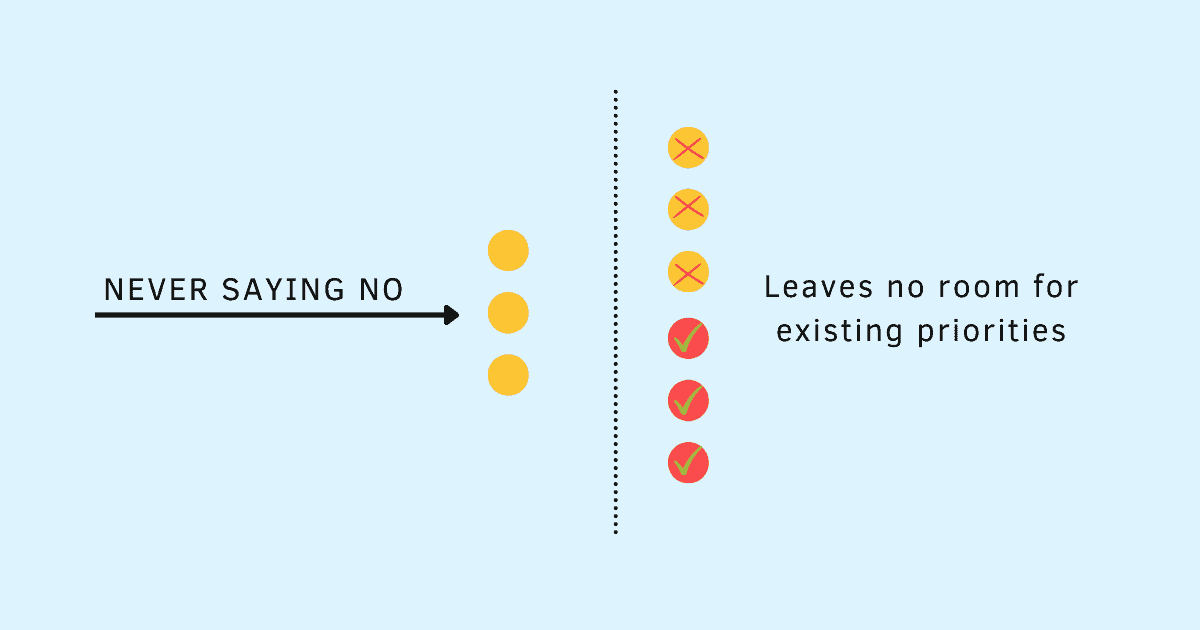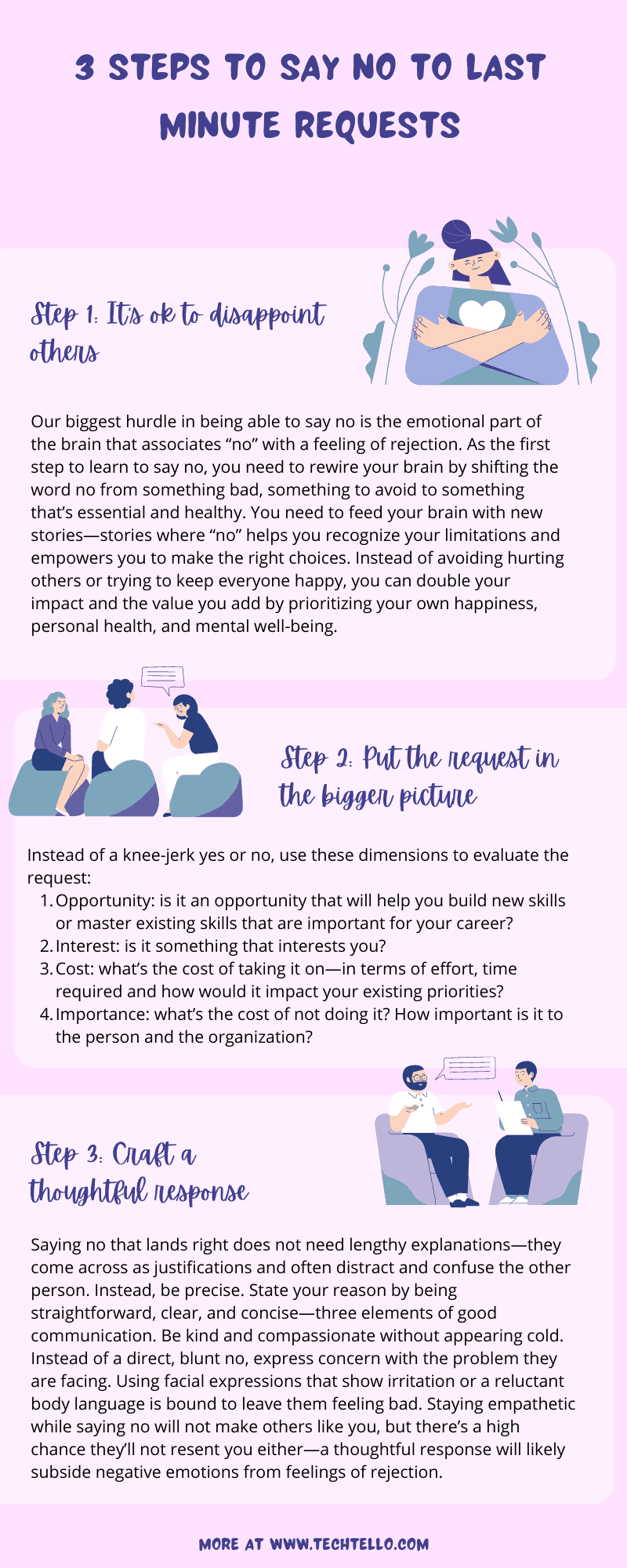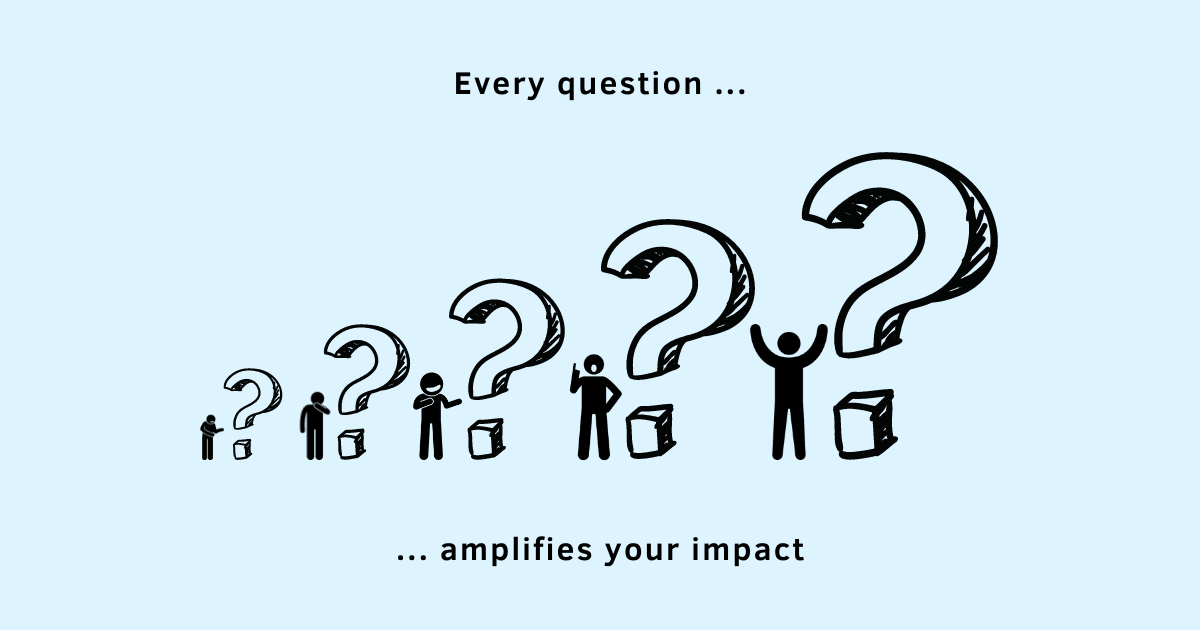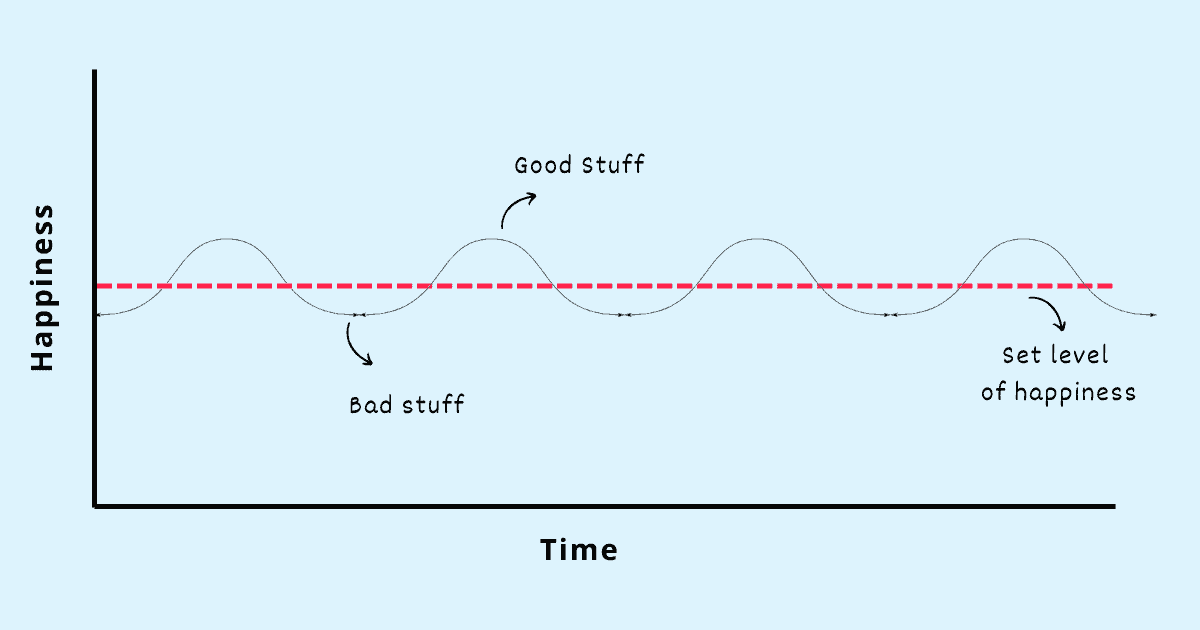How to Say No to Last Minute Requests

Early in my career, I got into the habit of saying an enthusiastic yes to every last-minute request—meeting request that showed up just when I am about to leave from office, so-called minor changes or product enhancements just a day before the release, a colleague asking me to stay back to help them with a production issue or my manager pulling me to work on a deliverable that’s running late.
Initially, it all felt good. Being able to help others, put out fires, share my knowledge and expertise led to feelings of accomplishment. Knowing that others need me made me feel important. But all that dopamine hit came at a cost. Soon, these tiny little yeses added up and I was working weekends and late into the nights.
Trying to keep up with my existing commitments while making space for new ones was bound to cause stress and anxiety. Accommodating all these requests into an already packed schedule left me feeling tired, burnt out, and exhausted.
Yet, I didn’t realize that saying no was an option. What if I said a no and it tarnished my image? What if I got labeled as someone who’s not helpful or not a team player? The more I accepted these last-minute requests, the more my identity got tied up with the person who comes in and saves the day.
Unwilling to part with this identity only made things worse—trying to make everyone happy impacted my health and personal well-being. What was once a source of joy now felt like an obligation—with feelings of anger, frustration, and dissatisfaction.
Self-care isn’t selfish. It’s necessary. The problem is, if you’re constantly saying yes to other people, putting their priorities ahead of your own, you won’t have the time or energy to care for yourself. And you’ll slowly become irritated, cynical, and miserable.
― Damon Zahariades, The Art Of Saying NO
I don’t remember the exact day when I had this breakthrough moment, but I said to myself “enough is enough. I can’t go on leading a life like this.” It was time for me to shift from a dysfunctional yes that ruled my life to a healthy no that will empower me.
I was so used to saying yes all the time that declining a request was a little nerve-wracking in the beginning. I worried about disappointing my boss, upsetting a coworker, and anxious about what saying no would mean to my career.
I understood that while a few times I didn’t have a choice in the matter, most of the time I did. After a little bit of trial-and-error, lots of practice, and experience, I learnt to turn down a request without offending the other person and keeping the relationship intact.
Just like I did, you can do it too. You can say no to a last-minute request and still look like a team player. Simply saying no without a hint of why you’re declining their request is bound to put people off. But most people will understand when you do it in a thoughtful manner. As for those who don’t, you shouldn’t fret about them anyway.
Here are the 3 steps I followed that made it easier to decide and communicate my NO.
3 steps to say no to last-minute requests
Step 1: It’s ok to disappoint others
Our biggest hurdle in being able to say no is the emotional part of the brain that associates “no” with a feeling of rejection. Growing up when our parents said no to our requests—can I watch tv, can I eat candy, can I jump on the bed—we felt strong negative emotions. Automatically, no in our dictionary became the evil word.
We are now grown up, but the word “no” in our minds still evokes the same feelings of rejection. It doesn’t matter whether we are on the receiving end or we are the ones to say it, no continues to bring the same negative emotions.
As the first step to learn to say no, you need to rewire your brain by shifting the word no from something bad, something to avoid to something that’s essential and healthy. You need to feed your brain with new stories—stories where “no” helps you recognize your limitations and empowers you to make the right choices. Stories where “no” helps you keep commitments and builds trust. Stories where “no” keeps you from doing work with a huge personal cost.
It’s not our parents’ fault. Or our schools’. Or the government’s. Or our friends’. They all have their own issues—no need to blame them. But there’s no need to say yes to their stories either. Now is the time for us to build our own stories.
― James Altucher, The Power of No
Disappointing others by saying no will no longer bring strong negative emotions. Saying no will slowly shift the neural circuits in your brain from avoiding no to embracing it. Instead of being on autopilot and saying yes to everything that lands your way, you’ll learn to make the right choices.
Instead of avoiding hurting others or trying to keep everyone happy, you can double your impact and the value you add by prioritizing your own happiness, personal health, and mental well-being.
Step 2: Put the request in the bigger picture
Knowing when and why to say no is as important as knowing how to say no.
Instead of a knee-jerk yes or no, use these dimensions to evaluate the request:
- Opportunity: is it an opportunity that will help you build new skills or master existing skills that are important for your career?
- Interest: is it something that interests you? What excites you about this opportunity?
- Cost: what’s the cost of taking it on—in terms of effort, time required and how would it impact your existing priorities? Understand the scale and scope of the request to determine what kind of time commitment it demands.
- Importance: what’s the cost of not doing it? How important is it to the person and the organization?
If your help is required in an area where you have already contributed multiple times, the work will not interest you as there’s no learning involved. Instead of wasting your time by doing the thing you have always done before, turn this into an opportunity for another person on your team.
If it’s a high opportunity, high interest, high-cost activity, you may want to take it on. In this case, don’t try to squeeze in with your existing commitments. Make sure to reach out to the right person (in most cases your manager) to help you reshuffle your existing priorities and make space for this one.
Sometimes it’s ok to say yes when it’s something really important to the other person (like when they are dealing with a crisis) or of high value to the organization (a bug impacting millions of customers). Make sure to limit the number of such requests you entertain. Don’t categorize everything as urgent and important.
Putting the request through the right lens will help you optimize your impact and the value you add without compromising your health and personal well-being.
What you don’t do determines what you can do.
― Timothy Ferriss, The 4-Hour Workweek
Step 3: Craft a thoughtful response
Saying no that lands right does not need lengthy explanations—they come across as justifications and often distract and confuse the other person. Instead, be precise. State your reason by being straightforward, clear, and concise—three elements of good communication.
For example, you can say:
I am not the best person to do this job. May I suggest [xyz] person who is better suited to help out?
I am dealing with a high workload right now and can’t add more to my plate as it will impact my existing commitments. I hope you understand that I can’t help you with this request at the moment.
I have a deadline coming up in 2 days. I am dedicating all my time and energy to it. I have to say no to this request.
I cannot attend this meeting as it popped up in my calendar at the last minute. I need this time to do [xyz]. Please go ahead if you can do this meeting without me. If you need my help in specific areas, please drop me an email and I will respond to them at the earliest.
Be kind and compassionate without appearing cold. Instead of a direct, blunt no, express concern with the problem they are facing. You can say something like “I know this is challenging for you right now. I am extremely sorry that I can’t help at this moment.”
Using facial expressions that show irritation or a reluctant body language is bound to leave them feeling bad. Staying empathetic while saying no will not make others like you, but there’s a high chance they’ll not resent you either—a thoughtful response will likely subside negative emotions from feelings of rejection.
When you have trouble saying no to last-minute requests with the worry it might hurt others, remember this from Aziz Gazipura, Not Nice “You are not responsible for other people’s feelings. They’re not incompetent children. They’re adults who can handle their own feelings. They can work through disappointment, hurt, anger, sadness, and upset. In fact, doing so will make them stronger and healthier in the long run. You cannot stop others from feeling all discomfort, or all pain. It is an impossible task, a fool’s errand.”
Summary
- Most of us have a hard time saying no to last-minute requests from others as we worry about hurting and disappointing them.
- Trying to be helpful by never saying no does not make you a team player.
- Taking on more work than you can handle will lead to busy weekends and nights. Not being able to catch up with your commitments will ultimately affect your mental health and personal well-being.
- Saying no is an essential part to maximize your impact and the value you create.
- Start with rewiring your brain by accepting that it’s not your job to make everyone happy. It’s ok to disappoint others.
- Next, evaluate the request on a few key dimensions—opportunity, interest, cost, and importance—to determine if it’s worthwhile to say yes or good to pass it on.
- Finally, giving a thoughtful response goes a long way in ensuring your message is received well without coming across as arrogant or someone who’s difficult to work with.






























